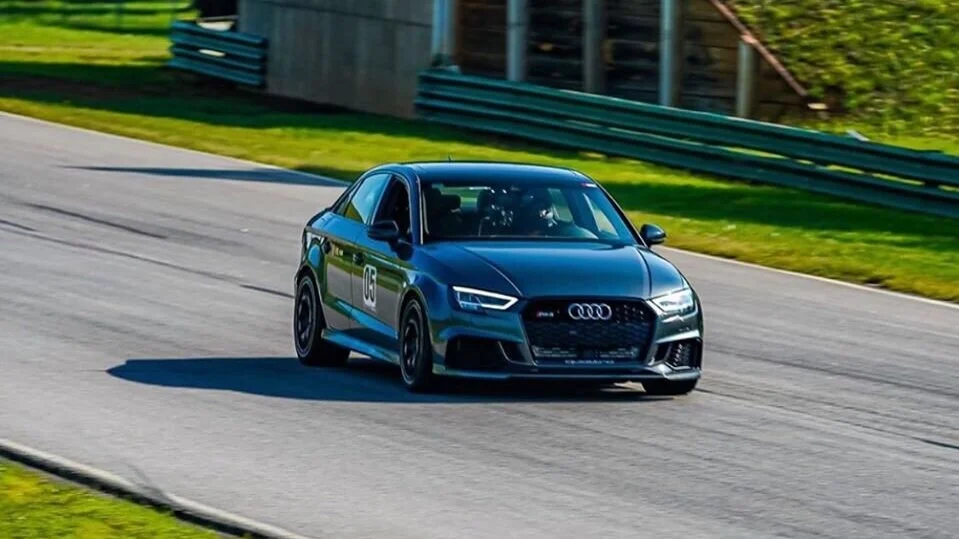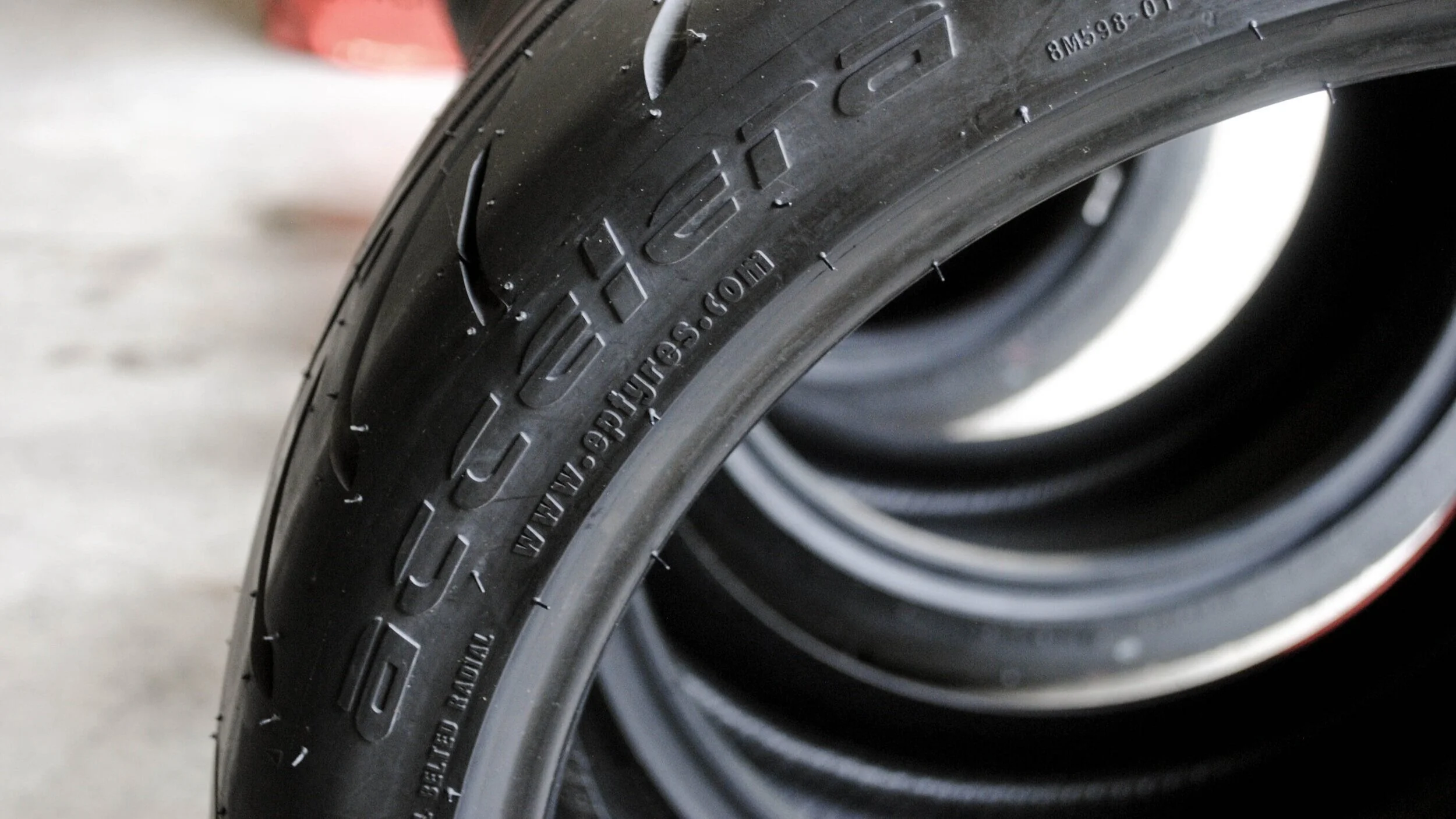Tires and Physics: Understanding Friction for Better Performance
If you've read a few articles about how cars work, much of it revolves around friction. Your brakes rely on making more friction. Motor oil? Reducing friction. Suspension? Putting friction where it needs to go. Tire pressure? You guessed it, friction. In this article, I'll cover some of the reasons why car enthusiasts care about pressures, how temperature affects them, and how to begin the process of adjusting the pressures for your particular application.
How does tire pressure work in a track car?
Tire pressure is usually discussed in two places, your starting pressure and your target pressure. The starting pressure is your cold pressure, typically set right before you head out on track where the tires are at rest, or have been at rest for a while. Your target pressure is the pressure you'd like to get to after a couple of laps of driving. Getting to that target pressure depends on the application, the tire, the track you're on, and the outside weather. The friction of tires turning, braking, and accelerating will increase the temperature, and as the air inside the tires expands, so does the pressure.
Your challenge will be to get to the correct target pressure within an appropriate amount of time on track. Let's talk a bit about the different types of Motorsports, and how the pressures function:
Drag Racing:
Ideally, you'll actually have a relatively low pressure. This is not because you expect the temperatures to go up, but because you're not doing any cornering. You’ll want the maximum contact patch vs. rolling resistance to ensure you get off the line and continue rolling throughout the run. The target pressure is still important, but your effective track time is extremely low, comparatively speaking, and the majority of your friction is right at the beginning of the run.
Auto-Cross:
In this type of Motorsports, you have much more friction. Even in a 45-second run, you can find that your pressure increases subtly. If your target pressure is above your normal street pressure, you may actually have to increase your pressure from driving to the competition space! Ideally, you'll be at your target pressure very quickly to get the maximum performance out of your tires for as much of the run as possible.
Road Racing:
Many road racers (I included) have a general starting place for their pressures, which will increase lap after lap, eventually settling depending on how hard you're driving. Your starting pressure is set such that there is room to increase without becoming dangerous, and the target pressure should land where during heavy turning, the tires are using the entire tread, without going over onto the sidewall.
Determining Starting Pressure
What you're working toward is determining the delta between your target pressure and starting pressure, and what level of educated estimation can be determined from many different factors that contribute to this. These factors include vehicle weight, track friction level (i.e., how grippy the pavement is), how hard you're going to be driving, and the weather (which I'll cover in another section). My personal starting point is about 32 in the front and 34 in the rear. The Accelera 651 Sport tires are very grippy on track and generate a good amount of heat. Combine that with the fact that my Audi RS3 weighs almost 4,000 lbs. with me in it, and I need some room for pressure to build! It's important to note that keeping a log of your starting pressures for a particular tire and particular vehicle will help greatly in the long run.
During the first few track days, I was constantly adjusting tire pressures chasing a specific target pressure, and adjusting the starting pressure is what helped do that. Once you've determined what target pressure (read below) you want to achieve, it's relatively easy to set your starting pressure. Come off track hot, when your tires are performing their best, and set your pressure to your target pressure. As the tires return to ambient, they should automatically come down to their own starting pressure. Record this, go back out, and continue to adjust. By your second set of days on track, you'll at least have a decent idea of where you want to start and can go from there.
PC: Rob Wilmoth
Determining Target Pressure
Now let’s talk about determining your target pressure. In this section, I'm going to focus on Auto Cross and Road Racing target pressures, as that's what the majority of my experience is based on. Your target pressure is the pressure you want your tires to be at when you have maximum grip across the width of the tire tread, including camber and other alignment factors. For Autocross, this means immediately upon entering the course. For the Road course, this may mean laps 3-5 while conserving the tires and engine from becoming too heated and ending up with slower laps than intended.
As tires are air-filled, they tend to want to 'bulge' out a bit. As they bulge on the contact patch, you end up in a situation where you may not be getting the entire contact patch fully on the track surface at the same time. You can determine this by using a piece of chalk or a light-colored marker on the face of the tire near the edge of the tread block. As you run the course, the track surface will show you where your tires are wearing and tell you how to compensate. Are you rolling over onto the sidewall and out of the tire tread? Add some pressure. Are you not using the entire tire tread to its fullest? Remove a few PSI. Once you're maximizing your tread, you've now pretty much settled on a target PSI. In my car, this equates to about 38 PSI in the front, and about 36 in the rear.
The Weather Effect
We've now discussed your starting pressure, your target pressure, how to learn what each should be, and what makes these important. Now I'll let you in on a piece of information that may frustrate a new track person. These metrics change!
The temperature has a direct impact on air pressure. The fact that we have a change from starting pressure to target pressure might as well be referred to as the starting temperature to target temperature. Because of the change in outdoor temperatures, your tires may start colder than they normally are, and the track surface may prevent you from getting to target pressure at all. Conversely, in the hot summer in the southeast US, we routinely see ourselves overheating quicker earlier in a session. In fact, in the hottest season (July/August), I can only manage about 15 minutes on the track before I'm completely heat soaked, my tires are not happy, and my brake fluid is near boiling. You must learn what signs your car shows you and respond accordingly.
Back to physics, we know that regardless of the PSI, and temperature, there is a fixed amount of air molecules in your tire. As they heat up, and the molecules become more 'excited', they expand in front of the excess heat. As they cool, they may land at a different pressure than what you're used to seeing, but all things being equal will still heat up in much the same way.
For example, at NCCAR in November, the air temperature was around 45 degrees. This made my Accelera 651 Sport tires show a bit low on pressure than what I'm used to for a starting pressure. I knew I needed the same target pressure, but I wasn't sure if this would cause me to come in under or over. I did know that in my heated garage, I set my tires to my normal starting pressure of 32 PSI. I knew that the same amount of air molecules were in the tires, so I left them alone.
Because the tires were colder, had the track been warmer, I probably would have landed at the correct target pressure. As it was, the track was cold, it was a bit overcast, and I had to increase the pressure. The next day, the temps were warmer, although a very cold morning, and I had to drop the pressures back down as I was generating too much friction and causing extra air expansion, increasing the tire pressure.
It's important to note that while science and physics are involved which will result in the same conditions in a controlled environment, a race track of any form is far from controlled! The sun hitting the track, cars going across in different places, rain, or transitioning to different types of surface can all play a significant role in how tires heat up, and how well they hold their heat, grip, and pressure. I encourage you to play with different setups, look at different ways to monitor these temperatures, and work with your tire manufacturer to get the recommended starting pressures. I'll begin posting each track write up with starting pressures and temperatures as best I can - As I'm an enthusiast and don't have a dedicated pit crew, this may be a slightly delayed one-man job while I run around the car! As the tires wear, these temperatures may change slightly, but the more critical part is making sure you understand how temperature and pressure impacts wear and grip. Ultimately, your goal is to maximize these last two such that you have a fun, and safe track event.



